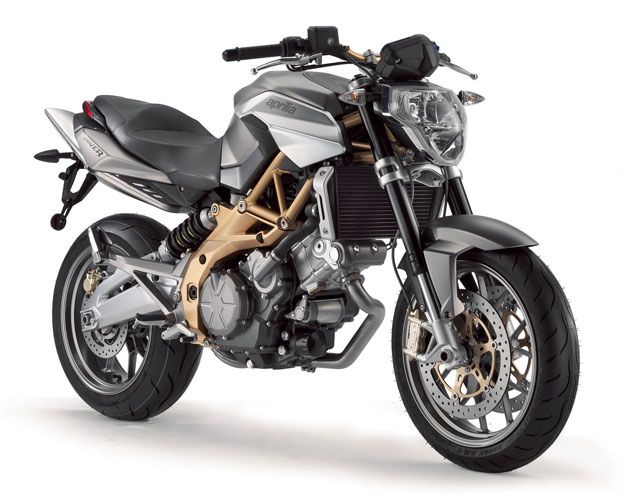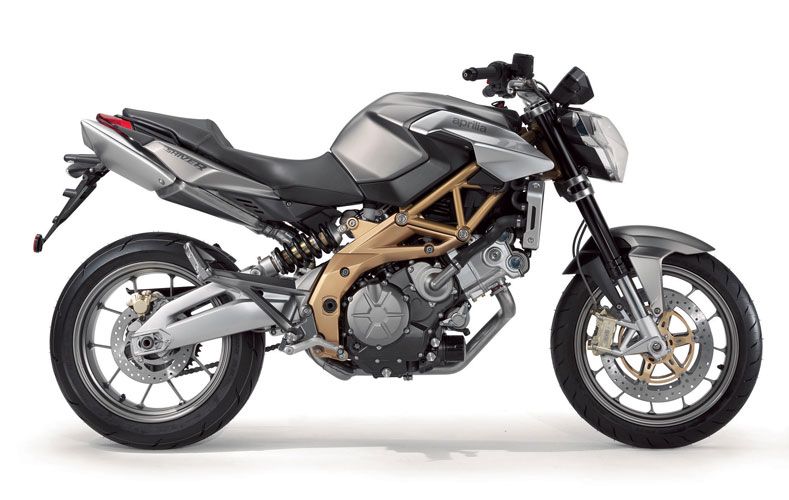Just a few days from the Press Launch of the most anticipated naked of the year, here is an interview with the Aprilia Style Center Director and the designer responsible for the stylistic genesis of the SL 750 Shiver. We present you with Miguel Galluzzi and Alberto Cappella, who will walk us through the design selections of a bike destined to amaze the public.
How was the esthetic and stylistic study of the Shiver 750 defined and from where was it derived?
The input was a result of strict collaboration between Management, Product Marketing, and the Style Center. Together we evaluated and discussed (keeping in mind the market research) to reach a single objective, in this case, of creating a naked with a strong personality and character that emphasizes the most technical and technological aspects.
How was the esthetic layout of the motorcycle designed around the extremely new Aprilia 750cc engine with liquid cooling?
The design of the motorcycle was developed around the architecture of the V90 twin engine. The aesthetics of the Shiver are characterized by keeping the mechanical aspects present while searching for compact dimensions and safeguarding the ability and ease of rider to insert him or herself atop the motorcycle. All the bodywork elements were studied for functionality and not solely from an aesthetic viewpoint. In any case, we really wanted to focus on the extremely important naked image of the motorcycle. This is how we reached a consistent stylistic equilibrium that was both compact and very rational.
What is the driving reason for the aesthetic impact of the Shiver?
The impact is very strong and characterized by acute, tight lines and vivacious edges, but we were quite attentive to not give into “over-designing”, as it is often called in the Style Center. The fundamental point is the mechanics that no one else can boast of (starting with the swing arm and frame) where all elements function well together because they are in harmony among themselves with no element that outdoes any other. The aesthetic impact of the Shiver creates a combination between mechanics and technical aspects that has no peers on the market.
How were the most characteristic details of the central and rear part of the bikestudied?
In the center, the characteristic parts are the belts that have the double function of bringing fresh air into the heated part of the engine under the gas tank and extracting that hot air generated inside the radiator and the cylinders. Naturally, everything is well connected so that the extractors are not separate elements but are instead well integrated with the form and lines of the tank. Not missing is the slight protection for the inevitable times the motorcycle accidentally falls off the kickstand. The posterior lines are certainly characterized by the decision to put the exhaust underneath the undersaddle. Yet even here, we sought to give the bodywork elements a function. For example, the exhaust covers do not only have an aesthetic function but more importantly, a protective one that enables them to isolate and keep heat away from where the passenger keeps their hands, avoiding the risk of burning anyone who touches the motorcycle after it has just been shut off.
Where does the style of the Shiver’s headlight and taillight come from?
Since it wasn’t previously a streamlined motorcycle, we didn’t put too much stock into the double headlight and instead concentrated on the single light to adhere to the Aprilia them, using the Pegaso and Mana in particular as examples of two contrasting trajectories. In this case, we embellished a bit, accentuating the y-like form that is again found in the back, giving it a practical function by positioning two small position lights on the side that create a characteristic, diffused beam of light. The posterior y-shape taillight, apart from mirroring the front, is used to close off the space between the two exhausts in order to give a more harmonious line from above.
How are the layout of the exhaust and the position of the single shock absorber closely connected?
We decided to use the high exhaust under the seat, creating a need to find a solution for the path of tubes that run to the exhaust terminal. After various evaluations, we decided to use a lateral shock absorber to maximize the central zone where the swing arm is typically positioned, since the cylinders’ exhaust collectors are then united to flow to the silencer. At this point, we also inserted a catalyst. Although it traditionally creates the most heat, we were able to direct it away from the shock absorber with this solution, far from the riders’ seat and the tyre. Naturally, this disposition allowed for extremely clean posterior and undersaddle aesthetics, also thanks to the lateral brake supports for the passenger that have been combined with those of the rider. In addition, the brake supports, mounted on the silent block with an anti-vibration function, show further attention to the details, even for the passenger.
What is new and old about the Shiver’s frame?
It is familiar because it enjoys the mixed frame composed of steel and aluminum that is already part of the Aprilia off-road line. It is certainly innovative with the system that connects the two parts, not the same one used in off-road motorcycles but instead used for the first time on a road motorcycle. There was initial questioning about the performance and structural aspects, but all trials were extremely positive and we are extremely satisfied with the results. From an industrial standpoint, the frame allows for ideal flexibility.


